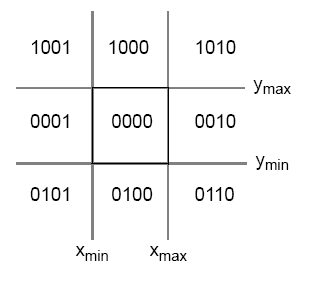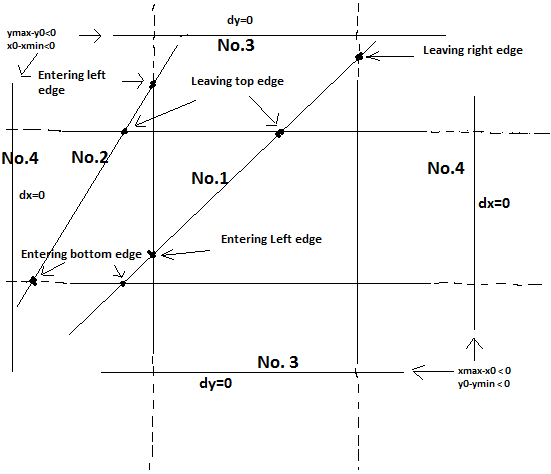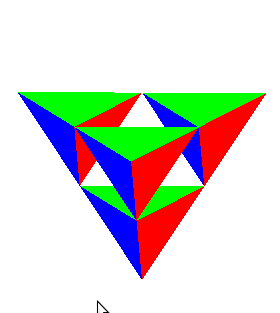7) Using OpenGL functions write a program to draw a shaded scene consisting of a tea pot on a table. Define suitably the position and properties of the light source along with the properties of the surfaces of the solid object used in the scene.
#include<GL/glut.h>
void wall(double thickness)
{
glPushMatrix();
glTranslated(0.5,0.5*thickness,0.5);
glScaled(1.0,thickness,1.0);
glutSolidCube(1.0);
glPopMatrix();
}
void tableLeg(double thick,double len) // draw one table leg
{
glPushMatrix();
glTranslated(0,len/2,0);
glScaled(thick,len,thick);
glutSolidCube(1.0);
glPopMatrix();
}
void table(double topWid, double topThick,double legThick,double legLen)
{
glPushMatrix();
glTranslated(0,legLen,0);
glScaled(topWid, topThick,topWid);
glutSolidCube(1.0);
glPopMatrix();
double dist =0.95* topWid/2.0 - legThick/2.0;
glPushMatrix();
glTranslated(dist,0,dist);
tableLeg(legThick,legLen);
glTranslated(0.0,0.0,-2*dist);
tableLeg(legThick,legLen);
glTranslated(-2*dist,0,2*dist);
tableLeg(legThick,legLen);
glTranslated(0,0,-2*dist);
tableLeg(legThick,legLen);
glPopMatrix();
}
void displaySolid(void)
{
GLfloat mat_ambient[] = { 0.7f,0.7f,0.7f,1.0f};// gray
GLfloat mat_diffuse[] = { 0.7f,0.7f,0.7f,1.0f};
GLfloat mat_specular[] = { 1.0f,1.0f,1.0f,1.0f};
GLfloat mat_shininess[]={50.0f};
glMaterialfv(GL_FRONT,GL_AMBIENT,mat_ambient);
glMaterialfv(GL_FRONT,GL_DIFFUSE,mat_diffuse);
glMaterialfv(GL_FRONT,GL_SPECULAR,mat_specular);
glMaterialfv(GL_FRONT,GL_SHININESS,mat_shininess);
// set the light sources propertis
GLfloat lightIntensity[] ={ 1.0f,1.0f,1.0f,1.0f};
GLfloat light_position[] ={ 2.0f,6.0f,3.0f,0.0f};
glLightfv(GL_LIGHT0 ,GL_POSITION,light_position);
glLightfv(GL_LIGHT0 ,GL_DIFFUSE,lightIntensity);
glMatrixMode(GL_PROJECTION);
glLoadIdentity();
glOrtho(-1.33,1.33, -1,1,0.1,100.0);
glMatrixMode(GL_MODELVIEW);
glLoadIdentity();
gluLookAt(2.3,1.3,2.0,0.0,0.25,0.0,0.0,1.0,0.0);
glClear(GL_COLOR_BUFFER_BIT|GL_DEPTH_BUFFER_BIT);
glPushMatrix();
glTranslated(0.4,0,0.4);
table(0.6,0.02,0.02,0.3);
glPopMatrix();
glPushMatrix();
glTranslated(0.6,0.38,0.5);
glRotated(30,0,1,0);
glutSolidTeapot(0.08);
glPopMatrix();
wall(0.02);
glPushMatrix();
glRotated(90.0,0.0,0.0,1.0);
wall(0.02);
glPopMatrix();
glPushMatrix();
glRotated(-90.0,1.0,0.0,0.0);
wall(0.02);
glPopMatrix();
glFlush();
}
int main(int argc, char** argv)
{
glutInit(&argc,argv);
glutInitDisplayMode(GLUT_SINGLE|GLUT_RGB|GLUT_DEPTH);
glutInitWindowSize(640,480);
glutInitWindowPosition(100,100);
glutCreateWindow("simple shaded scene consisting of a tea pot on a table ");
glutDisplayFunc(displaySolid);
glEnable(GL_LIGHTING);
glEnable(GL_LIGHT0);
glShadeModel(GL_SMOOTH);
glEnable(GL_NORMALIZE);
glEnable(GL_DEPTH_TEST);
glClearColor(0.1,0.1,0.1,0.0);
glViewport(0,0,640,480);
glutMainLoop();
return 0;
}
Suppose the external asks for changing the color of each wall or table or teapot it can be done easily. Here is a modification to the teapot program=> Click Here
#include<GL/glut.h>
void wall(double thickness)
{
glPushMatrix();
glTranslated(0.5,0.5*thickness,0.5);
glScaled(1.0,thickness,1.0);
glutSolidCube(1.0);
glPopMatrix();
}
void tableLeg(double thick,double len) // draw one table leg
{
glPushMatrix();
glTranslated(0,len/2,0);
glScaled(thick,len,thick);
glutSolidCube(1.0);
glPopMatrix();
}
void table(double topWid, double topThick,double legThick,double legLen)
{
glPushMatrix();
glTranslated(0,legLen,0);
glScaled(topWid, topThick,topWid);
glutSolidCube(1.0);
glPopMatrix();
double dist =0.95* topWid/2.0 - legThick/2.0;
glPushMatrix();
glTranslated(dist,0,dist);
tableLeg(legThick,legLen);
glTranslated(0.0,0.0,-2*dist);
tableLeg(legThick,legLen);
glTranslated(-2*dist,0,2*dist);
tableLeg(legThick,legLen);
glTranslated(0,0,-2*dist);
tableLeg(legThick,legLen);
glPopMatrix();
}
void displaySolid(void)
{
GLfloat mat_ambient[] = { 0.7f,0.7f,0.7f,1.0f};// gray
GLfloat mat_diffuse[] = { 0.7f,0.7f,0.7f,1.0f};
GLfloat mat_specular[] = { 1.0f,1.0f,1.0f,1.0f};
GLfloat mat_shininess[]={50.0f};
glMaterialfv(GL_FRONT,GL_AMBIENT,mat_ambient);
glMaterialfv(GL_FRONT,GL_DIFFUSE,mat_diffuse);
glMaterialfv(GL_FRONT,GL_SPECULAR,mat_specular);
glMaterialfv(GL_FRONT,GL_SHININESS,mat_shininess);
// set the light sources propertis
GLfloat lightIntensity[] ={ 1.0f,1.0f,1.0f,1.0f};
GLfloat light_position[] ={ 2.0f,6.0f,3.0f,0.0f};
glLightfv(GL_LIGHT0 ,GL_POSITION,light_position);
glLightfv(GL_LIGHT0 ,GL_DIFFUSE,lightIntensity);
glMatrixMode(GL_PROJECTION);
glLoadIdentity();
glOrtho(-1.33,1.33, -1,1,0.1,100.0);
glMatrixMode(GL_MODELVIEW);
glLoadIdentity();
gluLookAt(2.3,1.3,2.0,0.0,0.25,0.0,0.0,1.0,0.0);
glClear(GL_COLOR_BUFFER_BIT|GL_DEPTH_BUFFER_BIT);
glPushMatrix();
glTranslated(0.4,0,0.4);
table(0.6,0.02,0.02,0.3);
glPopMatrix();
glPushMatrix();
glTranslated(0.6,0.38,0.5);
glRotated(30,0,1,0);
glutSolidTeapot(0.08);
glPopMatrix();
wall(0.02);
glPushMatrix();
glRotated(90.0,0.0,0.0,1.0);
wall(0.02);
glPopMatrix();
glPushMatrix();
glRotated(-90.0,1.0,0.0,0.0);
wall(0.02);
glPopMatrix();
glFlush();
}
int main(int argc, char** argv)
{
glutInit(&argc,argv);
glutInitDisplayMode(GLUT_SINGLE|GLUT_RGB|GLUT_DEPTH);
glutInitWindowSize(640,480);
glutInitWindowPosition(100,100);
glutCreateWindow("simple shaded scene consisting of a tea pot on a table ");
glutDisplayFunc(displaySolid);
glEnable(GL_LIGHTING);
glEnable(GL_LIGHT0);
glShadeModel(GL_SMOOTH);
glEnable(GL_NORMALIZE);
glEnable(GL_DEPTH_TEST);
glClearColor(0.1,0.1,0.1,0.0);
glViewport(0,0,640,480);
glutMainLoop();
return 0;
}
Suppose the external asks for changing the color of each wall or table or teapot it can be done easily. Here is a modification to the teapot program=> Click Here










